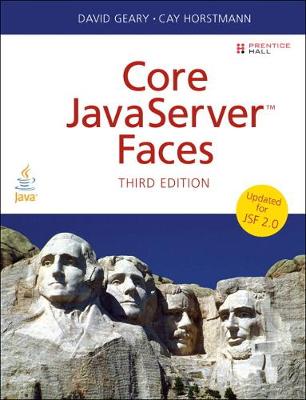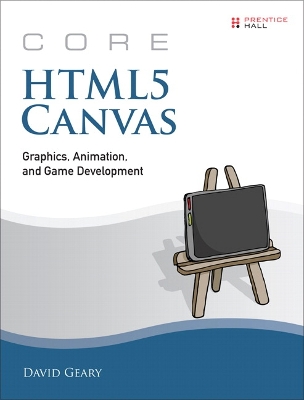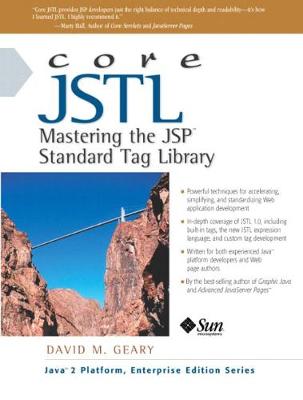Core
4 total works
To help you quickly tap into the power of JSF 2.0, the third edition of Core JavaServer™ Faces has been completely updated to make optimum use of all the new features. The book includes
Three totally new chapters on using Facelets tags for templating, building composite components, and developing Ajax applications
Guidance on building robust applications with minimal hand coding and maximum productivity–without requiring any knowledge of servlets or other low-level “plumbing”
A complete explanation of the basic building blocks—from using standard JSF tags, to working with data tables, and converting and validating input
Coverage of advanced tasks, such as event handling, extending the JSF framework, and connecting to external services
Solutions to a variety of common challenges, including notes on debugging and troubleshooting, in addition to implementation details and working code for features that are missing from JSF
Proven solutions, hints, tips, and “how-tos” show you how to use JSF effectively in your development projects
Core JavaServer™ Faces, Third Edition, provides everything you need to master the powerful and time-saving features of JSF 2.0 and is the perfect guide for programmers developing Java EE 6 web apps on Glassfish or another Java EE 6-compliant application servers, as well as servlet runners such as Tomcat 6.
One of HTML5’s most exciting features, Canvas provides a powerful 2D graphics API that lets you implement everything from word processors to video games. In Core HTML5 Canvas, best-selling author David Geary presents a code-fueled, no-nonsense deep dive into that API, covering everything you need to know to implement rich and consistent web applications that run on a wide variety of operating systems and devices.
Succinctly and clearly written, this book examines dozens of real-world uses of the Canvas API, such as interactively drawing and manipulating shapes, saving and restoring the drawing surface to temporarily draw shapes and text, and implementing text controls. You’ll see how to keep your applications responsive with web workers when you filter images, how to implement smooth animations, and how to create layered, 3D scrolling backgrounds with parallax. In addition, you’ll see how to implement video games with extensive coverage of sprites, physics, collision detection, and the implementation of a game engine and an industrial-strength pinball game. The book concludes by showing you how to implement Canvas-based controls that you can use in any HTML5 application and how to use Canvas on mobile devices, including iOS5. This authoritative Canvas reference covers
- The canvas element—using it with other HTML elements, handling events, printing a canvas, and using offscreen canvases
- Shapes—drawing, dragging, erasing, and editing lines, arcs, circles, curves, and polygons; using shadows, gradients, and patterns
- Text—drawing, positioning, setting font properties; building text controls
- Images—drawing, scaling, clipping, processing, and animating
- Animations—creating smooth, efficient, and portable animations
- Sprites—implementing animated objects that have painters and behaviors
- Physics—modeling physical systems (falling bodies, pendulums, and projectiles), and implementing tweening for nonlinear motion and animation
- Collision detection—advanced techniques, clearly explained
- Game development—all aspects of game development, such as time-based motion and high score support, implemented in a game engine
- Custom controls—infrastructure for implementing custom controls; implementing progress bars, sliders, and an image panner
- Mobile applications—fitting Canvas apps on a mobile screen, using media queries, handling touch events, and specifying iOS5 artifacts, such as app icons
Throughout the book, Geary discusses high-quality, reusable code to help professional developers learn everything they really need to know, with no unnecessary verbiage. All of the book’s code and live demonstrations of key techniques are available at corehtml5canvas.com.
AJAX and JavaServer Faces (Digital Short Cut)
by David Geary and Cay S Horstmann
Based on material from the forthcoming second edition of Core JavaServer™ Faces by David Geary and Cay Horstmann, this short cut explores how to use JavaServer Faces and AJAX (Asynchronous JavaScript with XMLHttpRequest) to create rich user interfaces. Starting with a brief review of Ajax fundamentals, it goes on to cover
Implementing Ajax with a servlet in a JSF application
Using JSF phase listeners for more complex Ajax scenarios
Form completion and real-time validation
Accessing UI view state from an Ajax call
Client-side state saving and Ajax
Direct Web Remoting with DWR
Finally, after concisely explaining JSF components that wrap existing JavaScript components using Prototype, Scriptaculous, Dojo, and Rico, this Short Cut briefly explores how to use the Ajax4jsf framework to seamlessly integrate Ajax into JSF applications.



